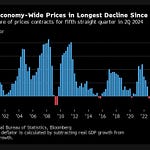
TL;DR: Chris Bishop has detailed National’s new housing policy for Election 2023 that confirms a National Government would not force councils to allow the building of three three-storey townhouses on a regular section without a resource consent — known as MDRS.
Rushed into the announcement after his leader Christopher Luxon let slip in a public meeting last week that the formerly bipartisan ‘Town House Nation’ policy was “wrong,” Bishop said councils could opt out of the MDRS policy, but would have to show they had zoned enough land for 30 years worth of housing demand, both via greenfields and brownfields development.
Below the fold, I examine the full details of the policy, Labour’s reaction and include my analysis of what it might mean for housing supply, councils, infrastructure funding, and house and land prices. I also have a look at the political economy issues at play, including whether and how councils, landbankers, suburban land owners will benefit (or lose). For fun, I have also added a suggested alternative at the end.
Long story short: I doubt MDRS-lite+twists will actually increase housing supply enough to cope with future unplanned and under-invested population growth, let alone make housing much more affordable or rectify past deficits. National is mostly using more of the same policies that have previously failed under both National and Labour, albeit with some tweaks. There are also major unanswered questions around population growth, new social housing funding and what it means for Aotearoa’s climate emissions trajectory.
Long story very short: Suburban home-owning NIMBYs, landlords and landbankers will love it, Councils will smirk and ignore it, and young renters with skills are unlikely to change their plans to re-start their lives and start their families in Australia.
Briefly elsewhere in the news this morning
Labour confirmed it would keep the age of eligibility for NZ Super at 65 and extend its Apprenticeship Boost programme
Labour’s leaders contrasted their low-target policies with a National/ACT ‘coalition of cuts’ at their weekend Congress, but without proposing new policies or talking much about its record;
A 1News/Kantar poll published last night found 52% of voters wanted a tax cut, but didn’t ask how they wanted to pay for it;
Nearly 600,000 people in Aotearoa have debt to MSD and IRD that averages $4,000 each and totals $2.4 billion, including $1 billion or 42% owed by 217,000 Maori, data out this morning showed; and,
America’s debt ceiling crisis appears to have been averted by a deal. Maybe.
Usually, I put in a paywall for paying subscribers at this point in the email newsletter and lock off the podcast above from free subscribers. But I want to experiment until the end of June with publishing everything to everyone immediately to see what happens with subscription rates, revenues and email opening rates. I want to thank paying subscribers in advance, who are still the only ones able to comment and get access to our very active chat section and webinars. Join our community by subscribing in full to support my journalism in the public interest about housing (un)affordability, climate change (in)action and poverty (not enough) reduction.
Inside National's housing backflip with twists and rolls
Assessed as an exercise in a politician swallowing a rat under a very public spotlight, Chris Bishop gave a spirited and relatively smooth account of himself yesterday.
He confirmed in an excellent interview (in full below) with Jack Tame on TVNZ’s Q&A that National had dumped its support for the compulsory (Medium Density Residential Standards (MDRS), saying:
councils could choose to opt out of the rule that means three three-storey townhouses can be built on a section without a resource consent;
but councils must immediately zone enough land as residential for 30 years worth of housing demand, although that’s unspecified, or;
a National Government could use unspecified ‘reserve powers’ to enforce re-zoning if councils didn’t do enough, while:
National is agnostic on whether councils choose greenfield or brownfield developments, but;
a National Goverment does retain the current NPS-UD rule that six-storey buildings can be built within walking distance of rapid transit stations; and,
it beefs up that rule by encouraging mixed-use developments; and,
a National Government would reduce the amount of land protected for food growing on the fringes of cities.
‘Show us the money then’
The full policy document, which is also embedded below, shows a National Government would:
offer up to $1 billion in incentives for Councils that consent more homes than their five-year average, which would have meant Auckland received $152 million last year because the incentive is $25,000 per consent;
reform the current Infrastructure Funding and Financing Act to ‘remove red tape’ to allow councils to create new debt vehicles paid for via targeted rates;
use ‘value uplift capture’ tools so the Crown could recover funds from land owners receiving private capital gains from public infrastructure investment; and,
making that infrastructure ‘user pays’, either through development contributions in the hundreds of thousands of dollars, or through targeted rates that depress land values throughout.
Pros, cons and policy gaps
In my view, the highlights, lowlights and cliffhangers from the policy are, starting with the positives:
retaining six-floor developments within walking distance of rapid transport routes stations and strengthening rules to allow them to be more mixed-use is great, as it will actually allow more city-centre densification;
the $25,000 per extra consent is positive, although it would overly benefit small and slow growth councils that have not seen the strong growth of recent years experienced in Auckland, Christchurch, Hamilton and Queenstown, and would mean no new funds for those big cities for a few years, given weak demand at the moment;
talking about Government using ‘value capture’ to fund developments is positive and actually using it would be more than Labour has actually done, although Labour has talked about using it too (see more below in the unanswered questions section); and,
talking more about requiring land to be zoned to supply 30 years of housing supply is positive, although see more in unanswered questions below.
The negatives are:
not addressing the issues of Kāinga Ora’s future building programme;
not including detail in National’s plans to resume community housing capital grants or extend income related rent subsidies (I suspect due to the earlier-than-planned release);
National not detailing its population growth expectations or plans was disappointing, especially as the key 30-year growth expectations depend on them; and,
National not adding any net new funding for infrastructure development is disappointing.
Mind the gaps
The key unanswered questions are:
What population growth levels will National plan and manage for in the 30-year demand growth plans?
What exact changes in the IFF will encourage councils to use it because only one council (Tauranga) has used it in five years, and only after commissioners were appointed?
How much will fully funding Greenfield’s infrastructure through targeted rates and development contributions add to new house prices, and reduce land values through targeted rates?
How much extra net money is going into housing infrastructure, given the $1b is using funds unused in KiwiBuild, the existing Housing Infrastructure Funds and a ban on Kāinga Ora buying new land?
What measures will force land bankers to release land into the market in a way that improves affordability, when they are currently able to ‘drip feed’ parcels out to keep land prices from falling?
What are National’s plans for Kāinga Ora’s build programme and grants and subsidies for community housing? They received only passing mentions in the policy document, suggesting it was released in a hurry after Christopher Luxon let slip last week that “MDRS was wrong.” Labour has committed to one extra year of Kāinga Ora house building in 2024/25 to add a net 3,000 homes to the social housing stock. National does not mention its plans.
What does 30 years of housing demand actually mean? Does it specify enough demand to improve affordability, or enough demand to house population growth? How does it deal with the need to renew the existing housing stock?
What does ‘within walkable catchments of rapid transit routes and stations mean? Councils have interpreted both the catchments and rapid transport routes and stations in various ways. For example, Wellington City Council voted to say its Johnsonville rail line wasn’t rapid transit, while Auckland Council has actually excluded all the homes along the proposed Auckland CBD to Airport route from any densification pending confirmation of station locations, and the line itself.
Here’s the interview, where Chris does a reasonably elegant job of consuming the hairy little bugger in front of three cameras and a sharp interviewer. He said Luxon let the news slip without telling Bishop because he was asked a direct question in a public meeting about it and gave a non-politicians’ direct answer1. I have my request in for an interview with Chris covering the questions and points above. Fingers crossed.
In conclusion…
Long story (not quite as) short: I doubt it will actually increase housing supply enough to cope with future unplanned and under-invested population growth, let alone make housing much more affordable or rectify past deficits. There is a $100 billion infrastructure deficit from past population growth outpacing Government and Council investment in the roads, pipes, trains, schools, hospitals and community facilities needed to cope with 1.5-2.0% population growth.
That compares with the less than 0.5% annual population growth expected in any planning sense over the last 30 years, and over a time when both arms of Government were on a decades-long infrastructure funding squeeze to enable tax cuts and limit rates increases. Then there’s another $100 billion needed, according to the Infrastructure Commission, to fund another 30 years of population growth estimated at 0.5% per year. Remember: population growth is already running at 2.5% per year again. A net zero addition to central Government infrastructure funding to deal with a $200 billion task is just not credible.
It’s always, always about the 30-30 rule
It’s also not credible to rely on some sort of reboot of the 2020 Infrastructure Funding and Finance Act to help councils fund development, which has been a total failure from all viewpoints and has cost at least six wasted years in hoping the private sector would somehow step up with the money. The only reason the first and only and currently last deal was done with Tauranga City Council for $175 million was the centralised control of Commissioners there implanted there by the Beehive. Saying that ‘cutting red tape’ would suddenly give IFF the momentum and scale to make a difference does not inspire confidence. It’s a failed idea. It should be allowed to die on the statutes.
IFF was always about enabling both National and Labour Governments to avoid the tax increases and the debt increases needed to properly fund the infrastructure at the lowest cost. Only the Crown has the balance sheet strength, the long investment horizon and the power to tax allowing the borrowing of large amounts for long periods cheaply. Put simply, the obsession of both flavours of Government with keeping net debt below 30% of GDP and getting tax down to or below 30% of GDP is just incompatible with paying the $200 billion++ infrastructure bill needed to properly handle 1.5%++ annual population growth for decades past and future.
Problems with value capture & fully-user-pays funding at the fringes
Value capture is a positive idea for funding infrastructure, but leaving the power and the revenues with the Crown will always be difficult and again robs councils of agency and revenue streams to solve these problems. Landbankers will lobby very hard against this. It breaks the basic business model of our housing-markets-with-bits-tacked-on economy, which is to buy land with borrowed money and then wait for lower interest rates, population growth, restrained infrastructure investment and no tax on capital gains to generate massively leveraged and untaxed gains much larger and with lower risks than other forms of investment.
The idea of forcing councils to zone land fully residential immediately in the hope of triggering some sort of wave of land supply is also magical thinking. Zoning a chunk of land residential does not mean it can be built on. That requires pipes and roads etc, so it always dependent on the funding for infrastructure.
More expensive homes and ‘lease’-like land is a bad combo
Loading all the costs into development contributions simply adds potentially hundreds of thousands per house to the up-front cost of housing, which only get paid once a house is bought and paid for. It means councils and developers have to borrow to cover that gap between zoning and building anyway. It also discourages large-scale developments because of the issues funding such big amounts on a council or developer balance sheet. It also means that the marginal cost of new housing goes up, which resets the price of existing houses higher. Magical indeed.
The other option is the targeted rate option, but as mentioned above, it isn’t popular with buyers and bankers because it complicates the freehold idea. It looks a lot like a lease, where the valuation is at the whim of whoever controls the targeted rate. Leasehold properties are often unbankable, which means they don’t have access to the juicy leveraged and tax-free gains that home owners are actually chasing.
The end result is the land is re-zoned, land bankers get the immediate benefit of the value uplift, there are endless years of debate and dealmaking to fund the infrastructure costs, and few new houses are built. There’s also the unpriced increase in the Crown’s climate emissions liability, already at up to $23.7 billion, which we can look at another day.
Here’s the policy document in full and I welcome the assessments and questions of paying subscribers in the comments below.
Long story very, very short: Suburban home-owning NIMBYs, landlords and landbankers will love it, Councils will smirk and ignore it, and young renters with skills are unlikely to change their plans to re-start their lives and start their families in Australia.
So how could or should it be done?
I’d suggest:
a broad-based and low-rate housing and transport infrastructure levy or land tax on all residential-zoned (so not iwi or farm land and including owner-occupied land) of (say) 0.5% per annum, which would raise $5 billion a year on current total residential land value of over $1 trillion;
that this levy be at least twice that general level (ie 1.0%) for residential-zoned land that is not built on, which would encourage land bankers to get greenfields land serviced and sold, and/or to buy brownfields land that is not subject to the un-built ‘super levy’, and discourage land bankers from getting ‘future urban’-type of zoning that locks out competitors and generates unearned value uplift;
that the levies are collected by the Crown and shared equally with councils on a per-new-resident basis so both Councils and the Governent can use those regular revenue streams to fund at least $200 billion of borrowings for terms of 30 to 50 years to build the infrastructure necessary for an agreed 1.6% population growth rate to 7.6 million by 2050 and 17 million by 2100;
that the Government creates a new Ministry or Agency of Works for Housing and Transport that combines the likes of Kāinga Ora, NZTA, the Infrastructure Commission and the Climate Commission to plan and deliver low-emission housing and transport with councils and regional authorities;
that this Ministry or Agency be legislated with the funding powers above and the Reserve-Bank-styled independence needed to achieve a trajectory towards zero emissions from transport and housing by 2050 and homes being worth four times the median incomes in each town and city by 20502, with renting costs no higher than 30% of disposable income; and,
that there be no consent fees or development contributions or targeted rates for land owners, developers and home buyers, in order to lower costs and land values.
That would incentivise and fund councils, ministries, land owners, developers and home buyers to plan for zero emissions and affordable homes and transport, with the infrastructure, affordability and emissions to cope with:
a likely influx of (wealthy) climate refugees from the Asian Hemisphere;
where at least two billion people will be living in areas likely to be uninhabitable by 2100; and,
where at least 100 million of those people will have the resources to migrate to somewhere like Aotearoa, which will need the skills, people and resources for a population that eventually hits 17 million that will be living in a climate at least two or even three degrees warmer than pre-industrial times.
It would also more immediately reduce inflation generally, including of rents, and improve health with increased use of walking and cycling and many, many more warm, dry homes close to where people live, learn and play.
Your thoughts? What’s wrong with this? What problems doesn’t it solve. What would the unintended consequences be? I welcome suggestions and insights from paying subscribers in the comments below.
There’s already an active discussion going on here with paying subscribers in the chat.
Ka kite ano
Bernard
Somehow this was a good thing in Bishop’s retelling. Heaven help us if Xi Jinping or Winston Peters asks Christopher Luxon asks a direct question in a negotiation.
Bishop mentioned 3.5 to 4 times income as affordable in the interview, but wouldn’t commit to it, other than to agree it would take decades to get to.














Share this post